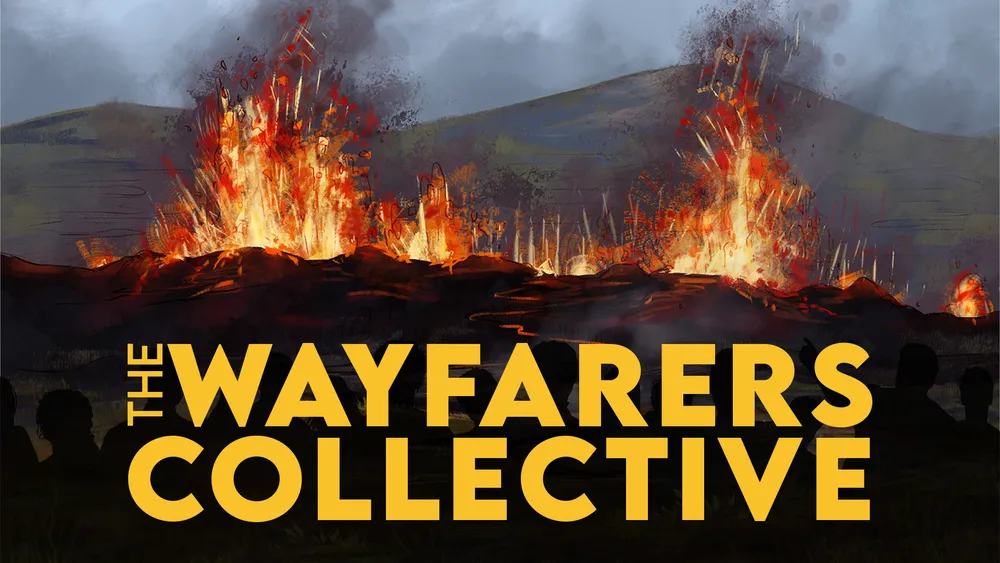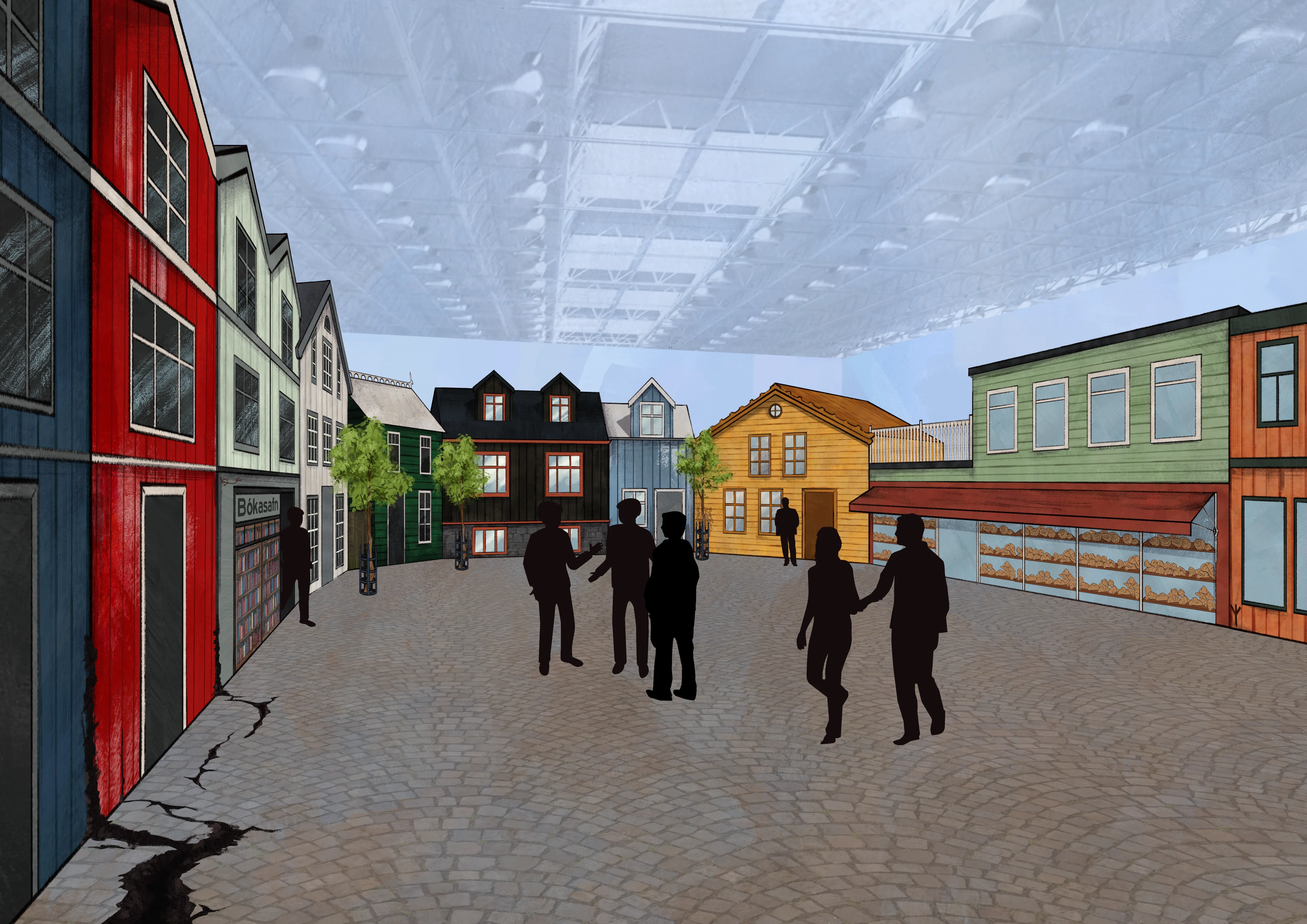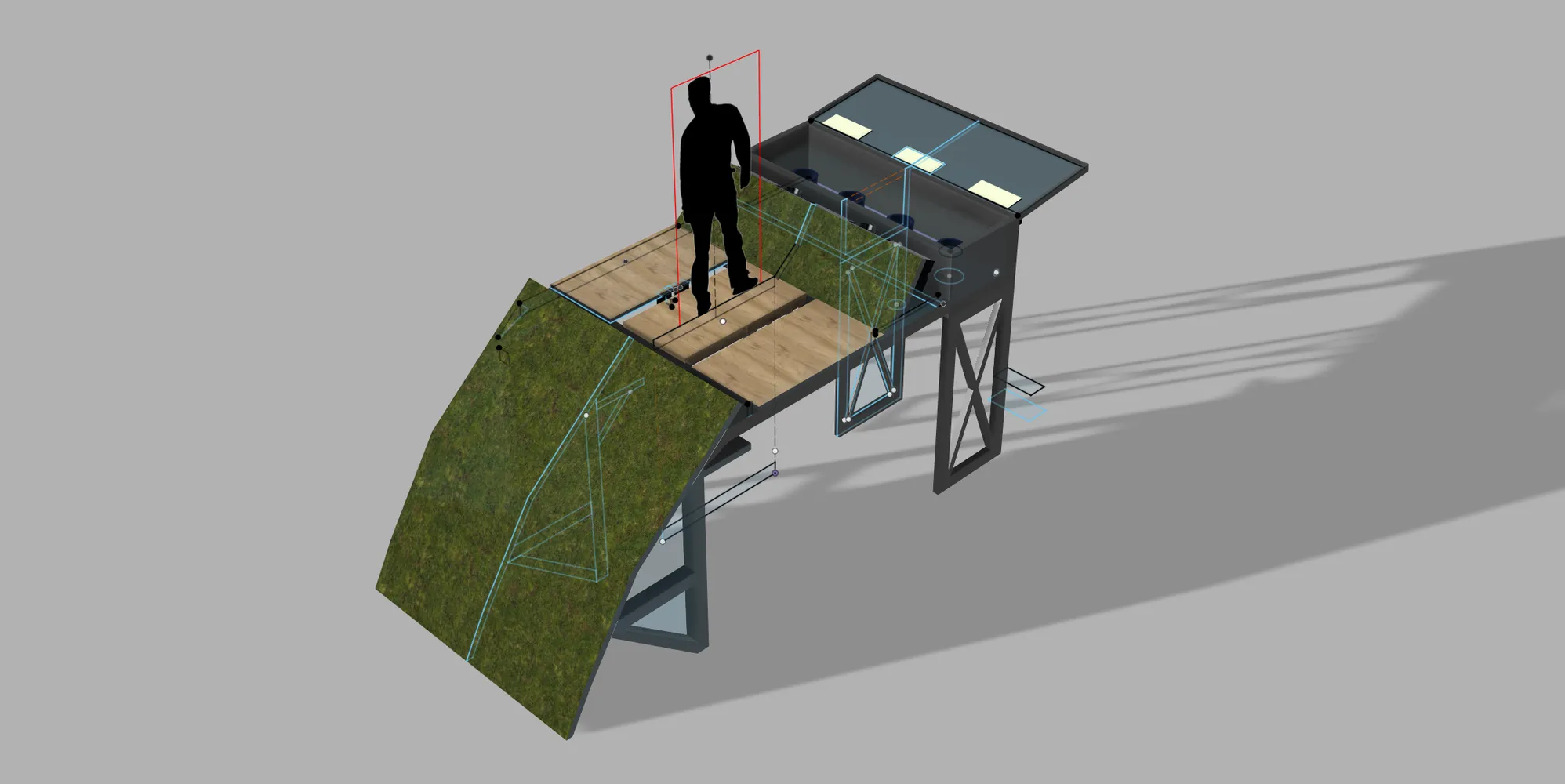
Concept Development | Themed Entertainment
Storyland design challenge: The Wayfarer's collective
In 2024, Elly Richards and I teamed up to take part in the 2024 Storyland Studio Design Challenge. We developed an immersive theatre concept called The Wayfarers Collective. To showcase the potential of this concept, we designed a flagship instalment called Reykgras, a story where guests help to solve the mystery of sudden earthquakes and geological anomalies in a small Icelandic-style settlement.
Together we developed the concept for the Wayfarers Collective and wrote the story for Reykgras. I handled the technical design of the show scenes, created 3D mockups of the venue and the technical venue designs. Elly focused on the art, branding and background research, ensuring a believable and rich story world.
Table of contents
The concept
The Wayfarers Collective is a Location-Based Entertainment (LBE) concept that brings a unique approach to immersive theatre. It's designed as an overarching brand with a series of unique attractions, with each one representing a new destination and new mysteries to uncover. When you visit a venue, you join members of the Collective to help them investigate and document peculiar places in which they have arrived.
We wanted to focus on bringing people together in an age of individual digital experiences. Guests actively participate in an adventure through collaborative puzzles and interactions with actors, all within a heavily themed physical environment that changes as the story progresses in real-time.

Artist impression of Reykgras, by Elly Richards
Core Values
The concept is built around four core values, guiding both the design and operations of the venues:
- Be Together: Every instalment encourages and facilitates interaction between people through its puzzles, which helps to foster a sense of belonging and create shared memories. The venues are also designed with accessibility in mind, as everybody should be able to join.
- Physical First: We opted for physical sets and environments to provide a rich experience and a direct path to immersion. Technology plays a supporting role to enrich the experience.
- Opt-in: Stories are opt-in. We offer rich story worlds for those who want to dive deep, but for casual visitors, the venues are designed to be enjoyable regardless, providing a simpler story, games, and a nice meal or drink.
- Education through entertainment: The storylines and challenges are based on real-world themes, allowing guests to interact with these concepts in a playful and natural way, where entertainment and story always come first.
Target Audience and Experience Structure
The experience is aimed at people 12 years and older looking for a fun half-day activity with friends and family. The concept is highly flexible and can appeal to a wide range of people due to its opt-in nature, mixed with puzzles, games, and food and beverages.
Storyline Structure and the Dossier App
Guests experience a linear story that unfolds in real-time and is divided into various phases. The change between phases is marked by a scene with actors that provides new information and unlocks new locations and puzzles.
At the start, guests get access to the TWC Dossier App (a web app). It's a tool for guests to keep track of their findings and receive update messages from the Wayfarers. Importantly, the app is *not* part of any puzzle mechanisms. This is a deliberate choice so guests are not incentivized to look at their phones, allowing them to enjoy the physical environment and each other's company.
Puzzles are an integrated, canon part of the story world, providing bits of information and encouraging guests to collaborate to solve the larger mystery.
Technical design
For the Reykgras instalment, the venue is divided into four distinct areas: the town square, the geyser field, the lava field, and the lava tunnel. The Icelandic-style town square uses continuous building facades to surround guests with theming and hide back-of-house areas, allowing for easy movement of staff and supplies out of sight.
As the core concept is physical-first, the majority of the effects are practical in nature. The two main practical effects are the earthquake scene and the grand finale, which involves a character "disappearing" into a volcanic fissure.
The Fissure Finale
One of the show scenes I did technical design for is the grand Finale, in which one of the characters disappears in a vulcanic fissure. To simulate the volcanic fissure:
- A basin of foaming water is placed out of the audience's sight, with air pumped through it to cause foaming.
- This foam is shot up using compressed air and lit with lights to make the liquid appear to glow, simulating magma.
- Fog outlets are placed behind the actor to simulate a smoke plume.
- A row of lights and CO2 jets are placed in front of the actor, which fire off as they fall through the trapdoor.
Gallery



3D model I created as a mockup / scale reference for the Reykgras venue.
Links
The short version of our final pitch deck can be found here.
Our submission on the Storyland Studio's website can be found here.